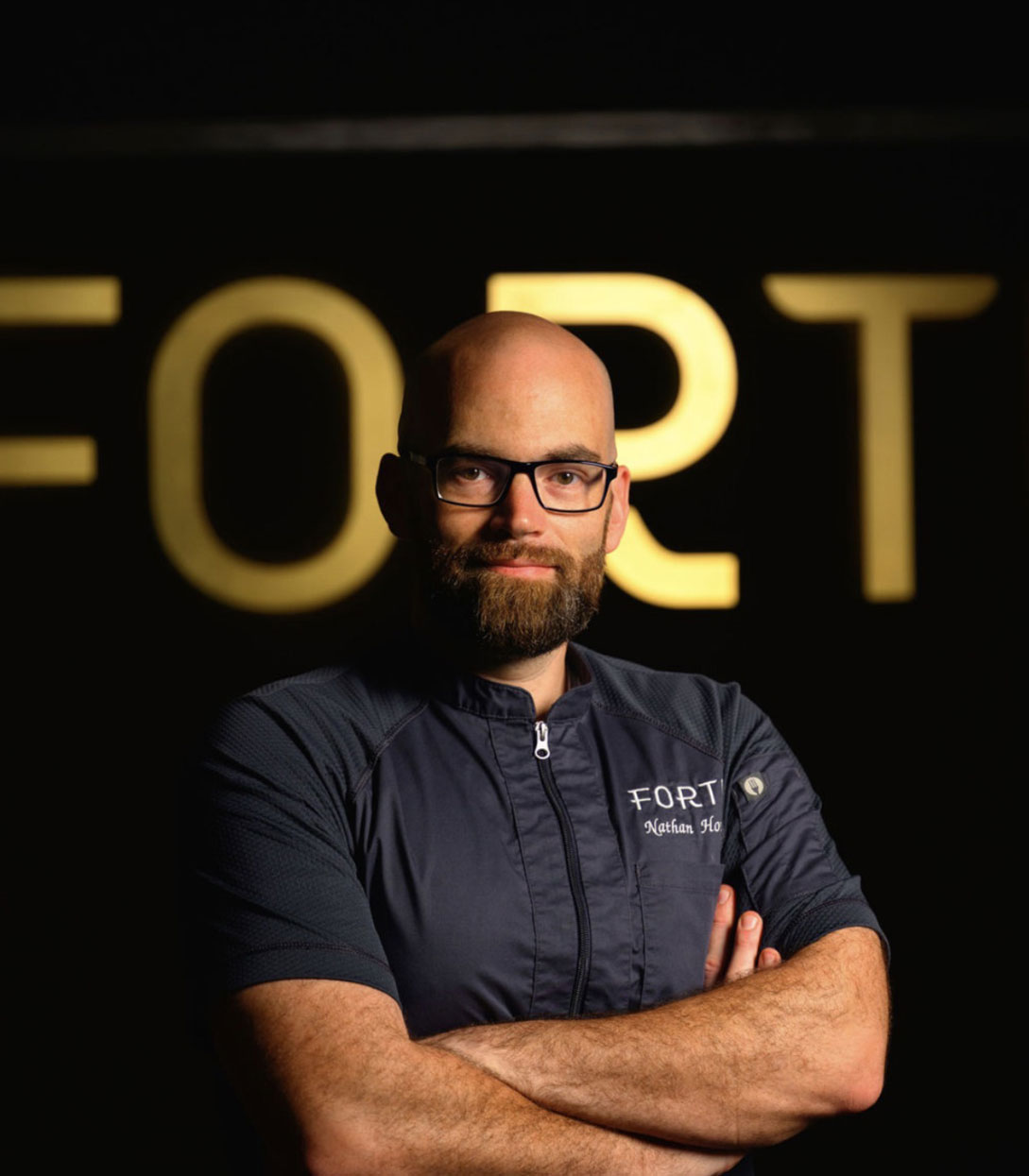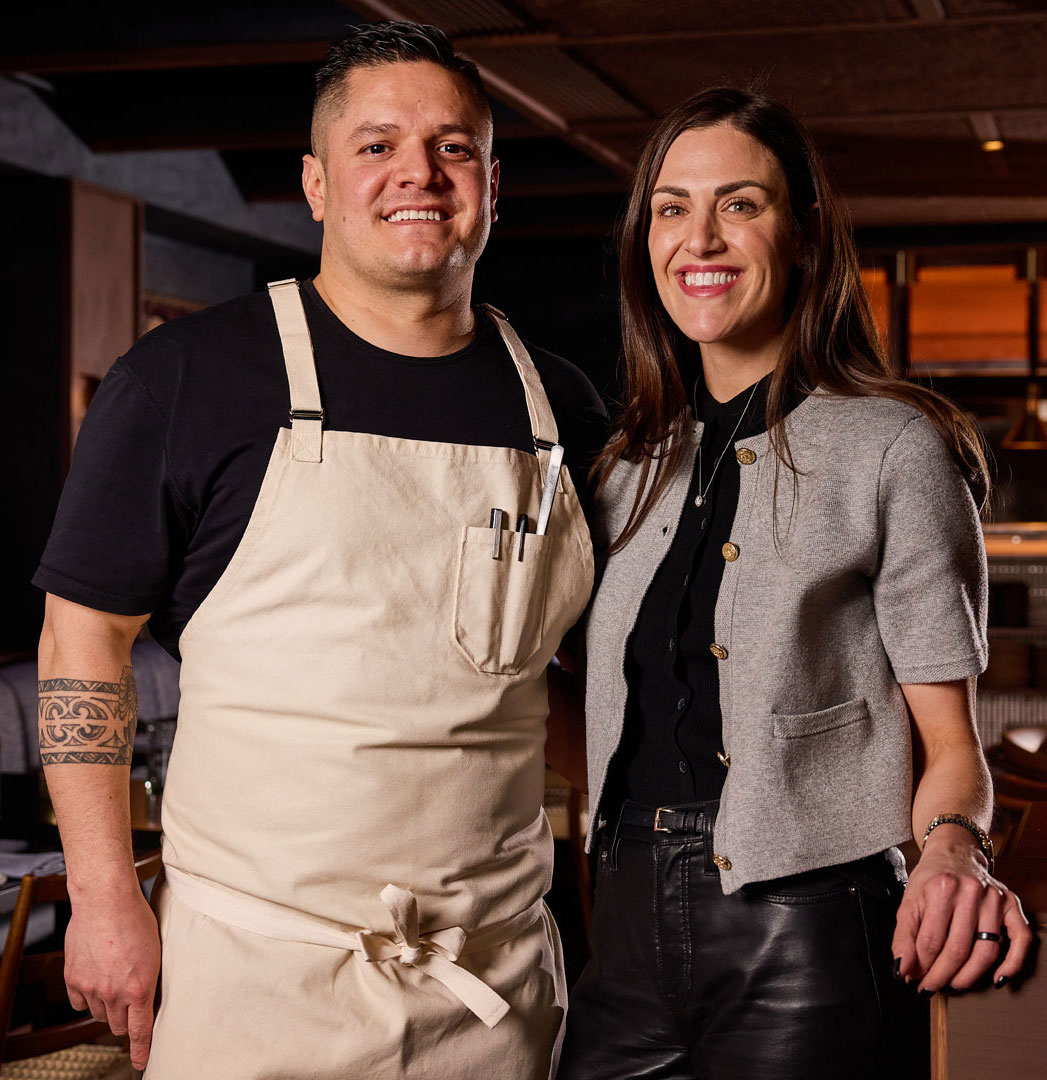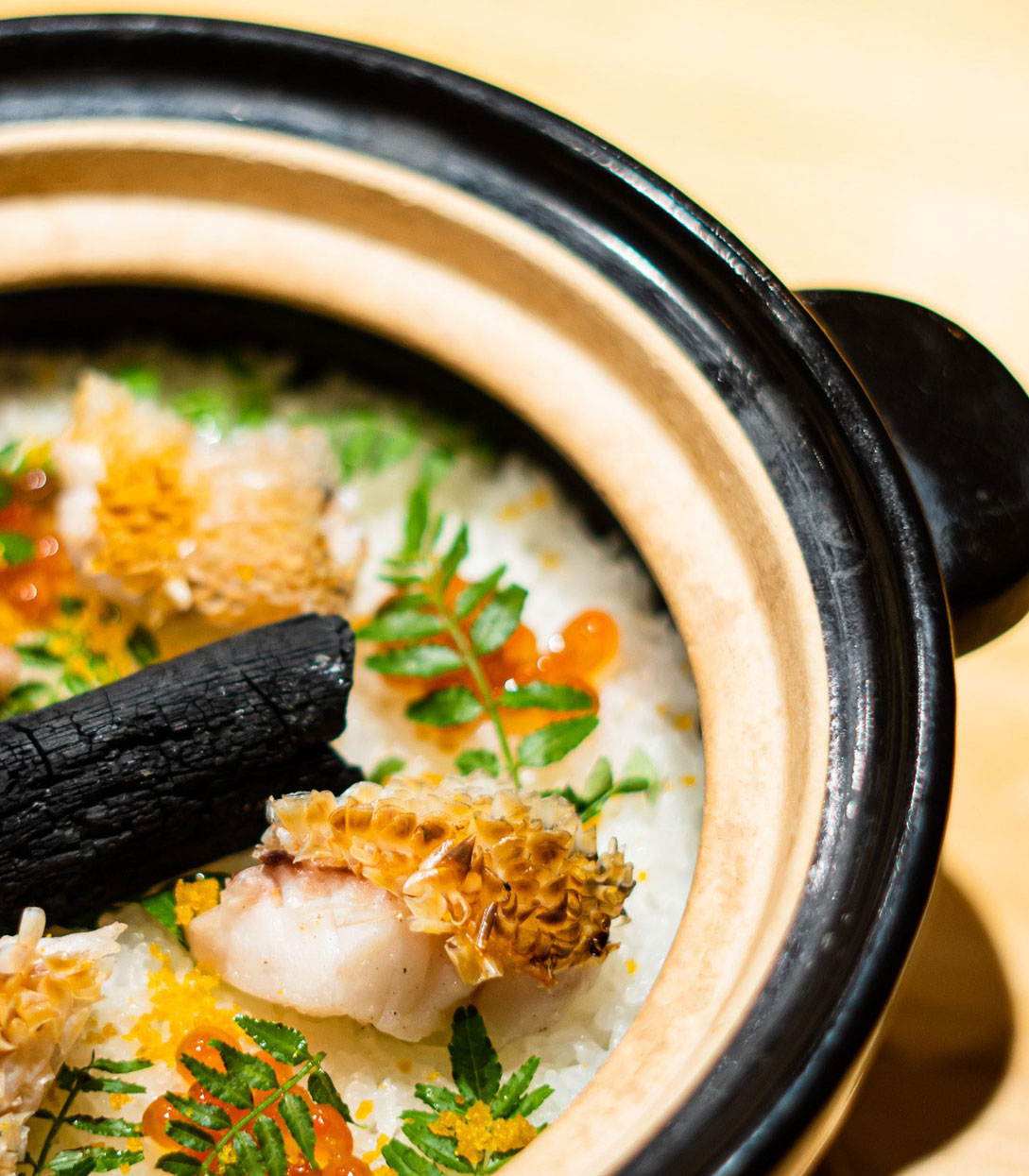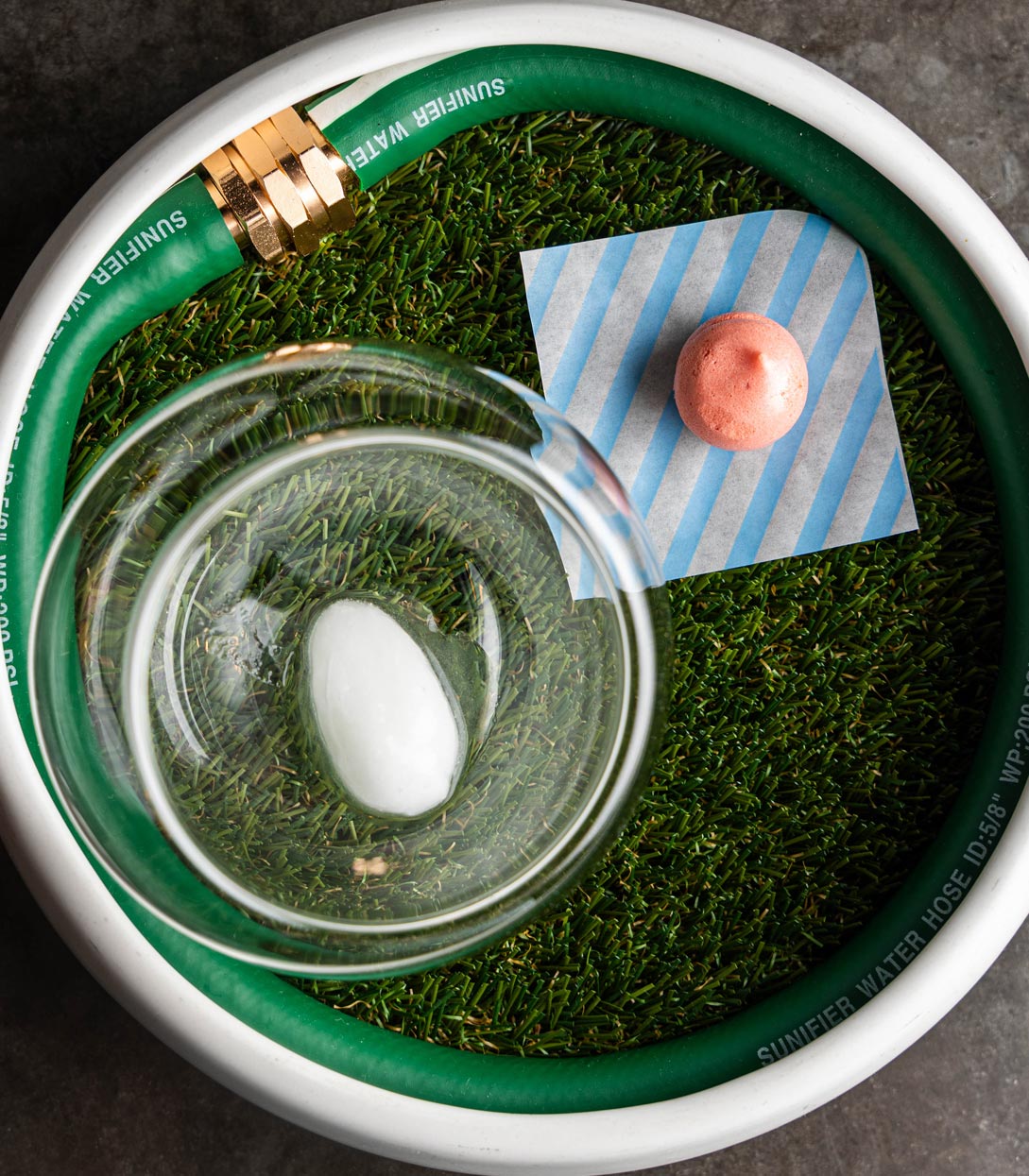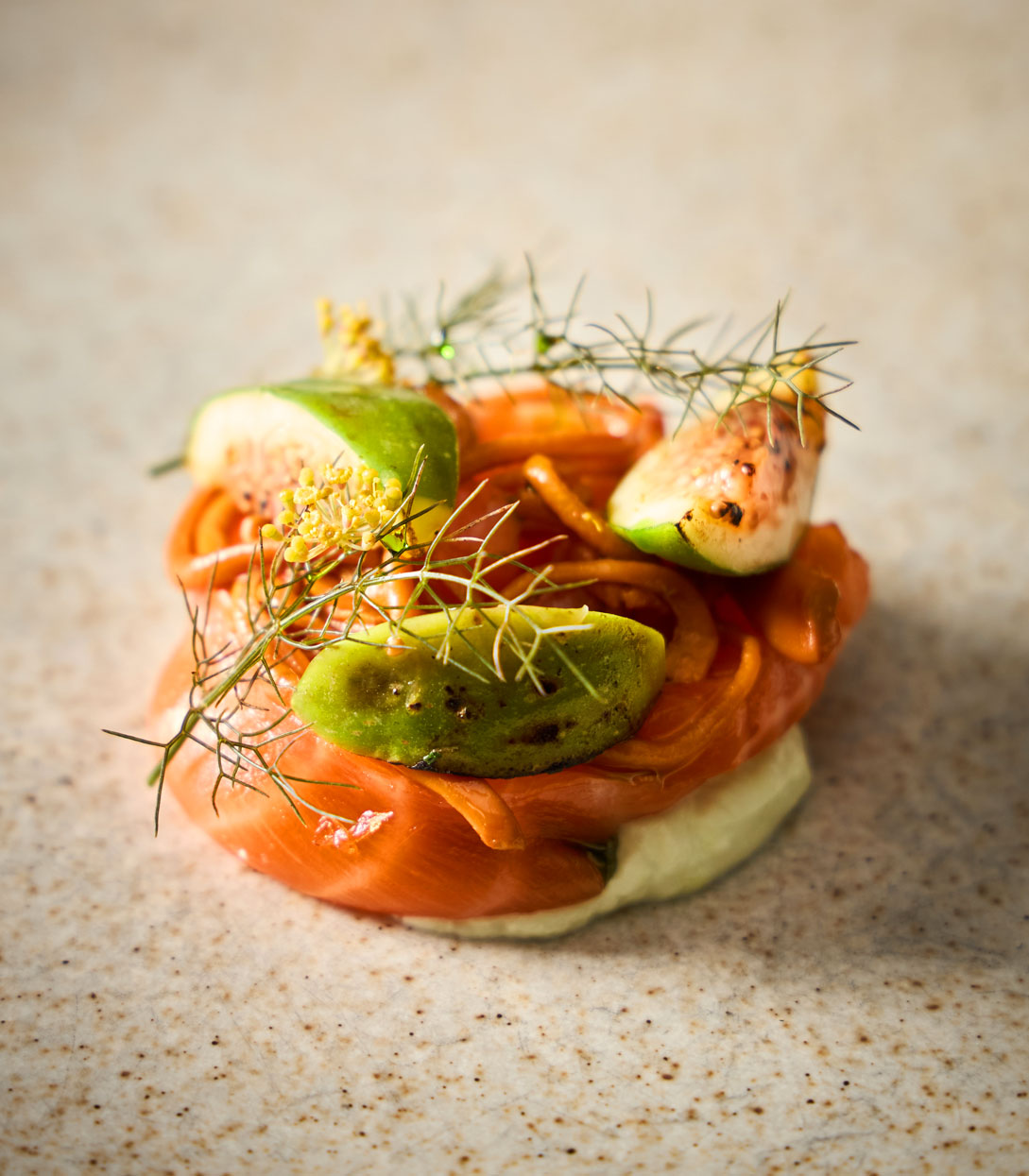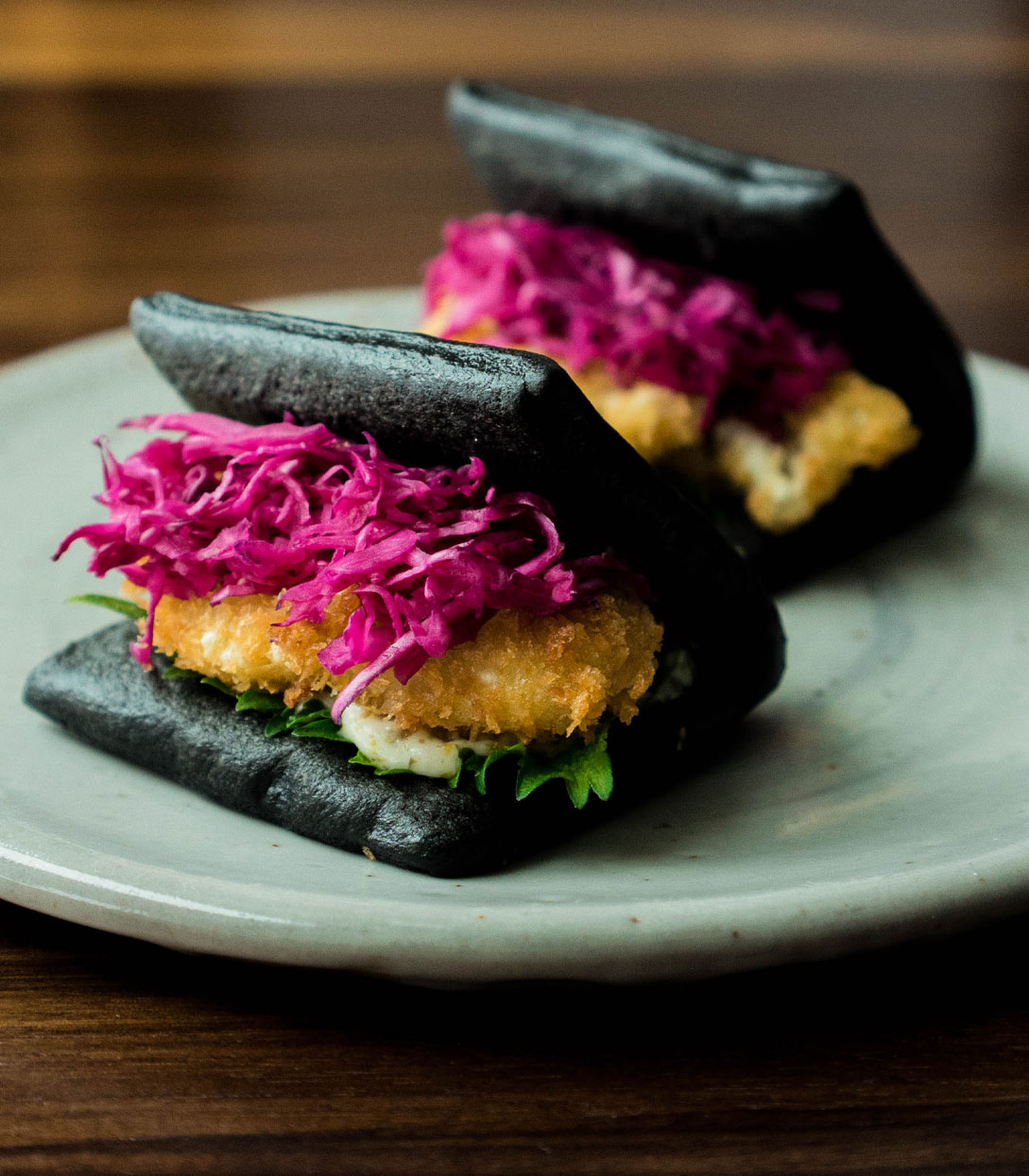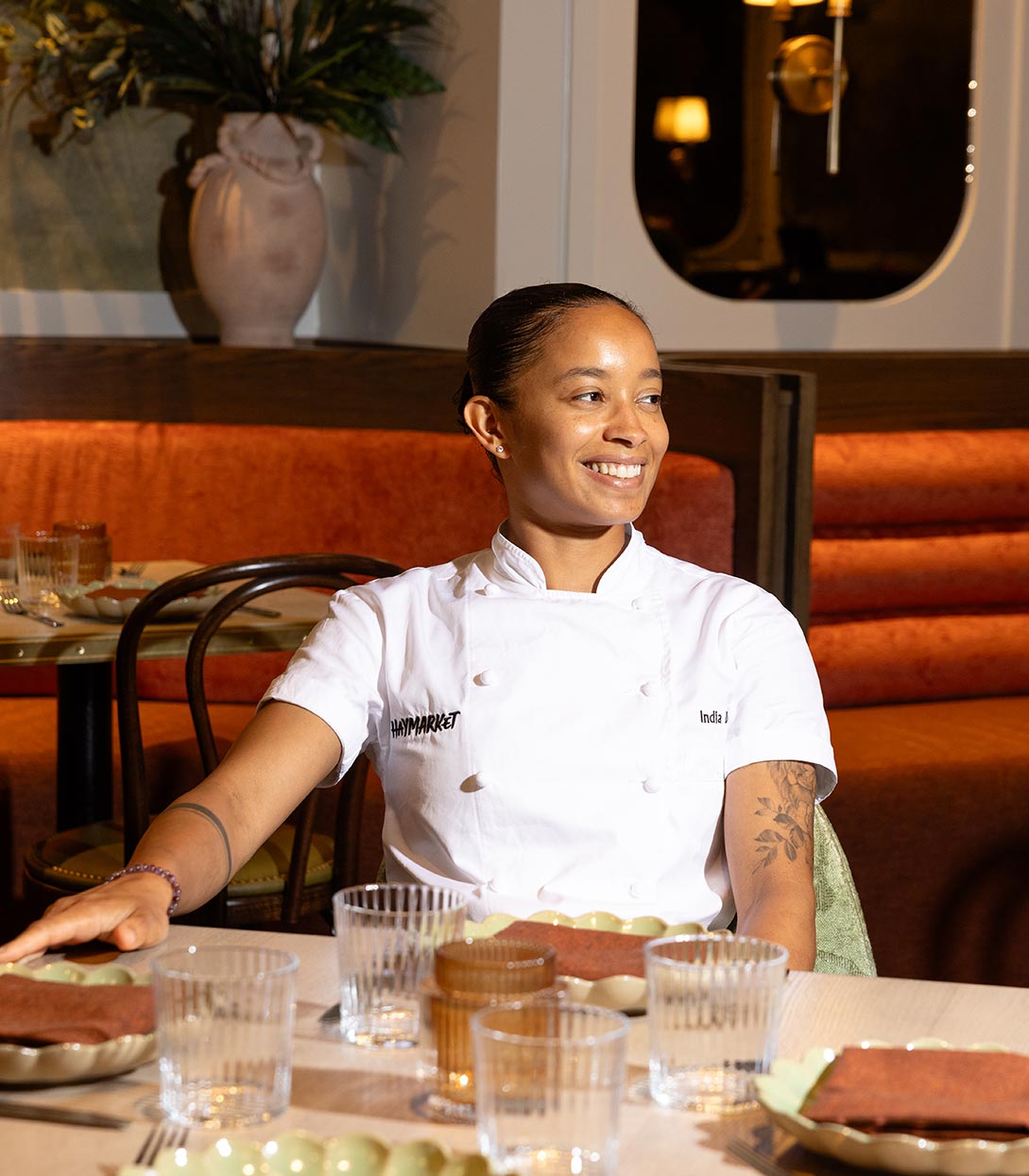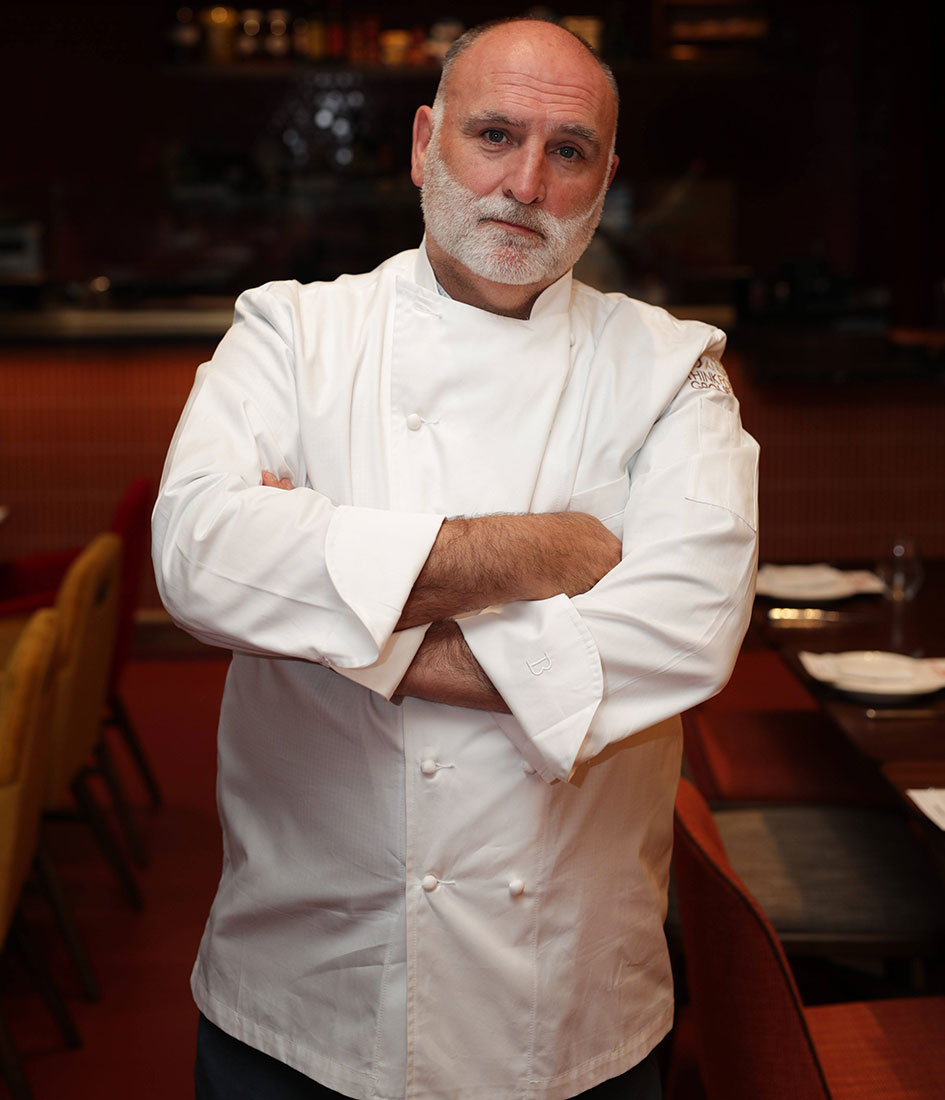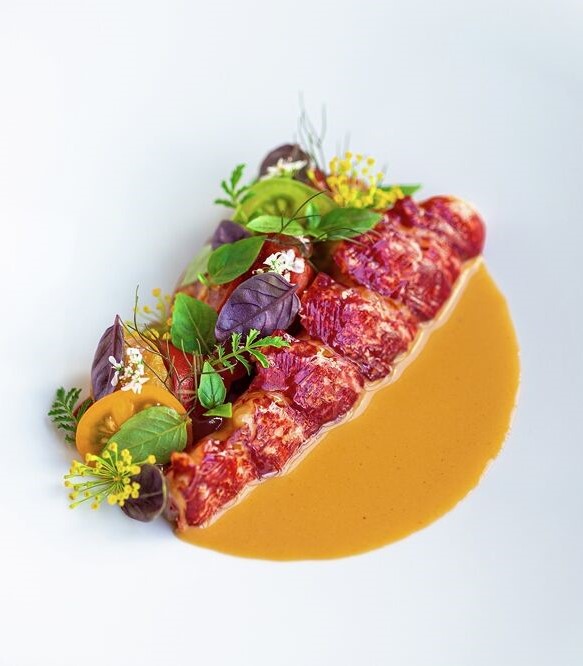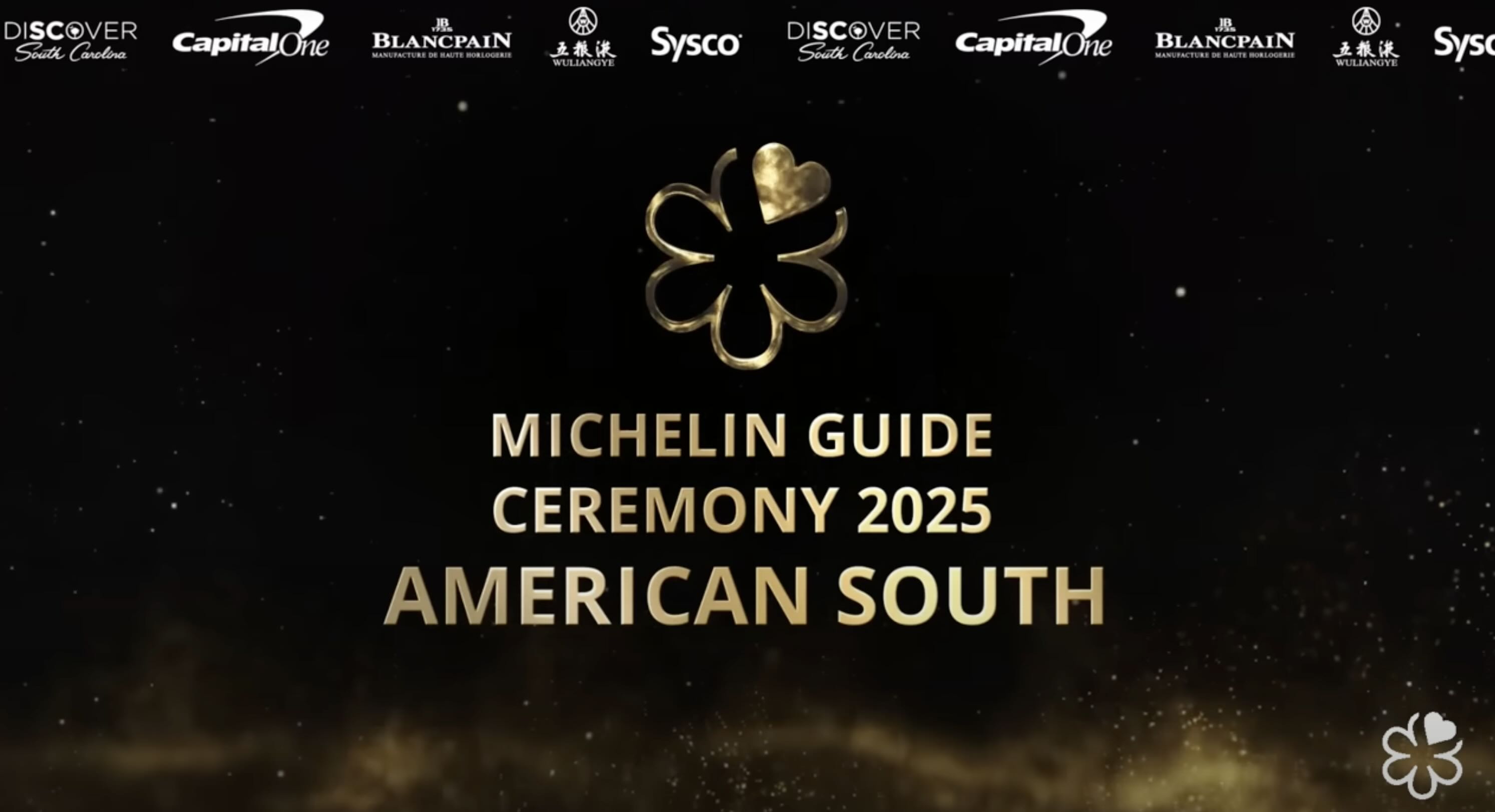Shinji’s is more than a cocktail bar, it’s a creative oasis for curious imbibers to expand their drinking horizons. Opened by the team behind One Star omakase hotspot, Noda, the Flatiron venue offers a groundbreaking libations list, including the world’s coldest martini (at (-27 degrees F), the fastest Ramos Gin Fizz (whipped up in five seconds), as well as the city’s largest selection of Japanese whisky (including rare collections like Mars’ Bakemono series/OR nearly 100 bottles).
“Creativity can be found throughout the entirety of our cocktail program. We aim to not follow any trends or base what we do off of other programs, but rather try to invent and create our own techniques,” says Jonathan Adler, Shinji’s beverage director, mentioning techniques like vacuum maceration that involves producing syrups from herbs and flowers using a vacuum seal chamber that allows flavor and color extraction without applying heat. There’s also “Moon Rocks,” which Adler explains as creating frozen, aerated juices and liquids to maintain freshness, create volume, texture, and speed up processes behind the bar.
The Moon Rocks technique is what’s used in one of their most illustrious drinks at the bar—the fastest Ramos Gin Fizz in the world. “The Shinji’s Gin Fizz took me about 10 months of just thinking about how to make it work,” explains Adler about the cocktail’s conception. “The goal was to make the fastest, most efficient Ramos Gin Fizz possible. I laid out all the factors and variables and eventually came up with the resulting cocktail. I did not have to test it multiple times, but rather did it once and it worked the first time.”
Adler credits his ability to construct a complex cocktail in his mind to his training as a former chef—having worked in Michelin Three Starred kitchens like Saison and the late Contra—as he understands balance of flavor, sweetness, and acidity so he can focus on innovation. Other remarkable libations available include PB & J, a shaken, low-ABV drink that has all the flavors of a peanut butter and jelly sandwich–without the peanuts or the jelly; Charred Banana, a riff on an Old Fashioned with bourbon and a housemade stock of clarified ripened bananas; and Jungle Nerd, a rejiggered Jungle Bird using every part of the pineapple, except the juice, for zero waste.
“Our goal is to push the boundaries of what a program can do. There are many cutting-edge programs out there, but not ones that are approachable from a guest standpoint and we hope to get to a point where we are the benchmark for technique cocktails not only locally, but on a global level,” says Adler, assuring: “While we are very technical and focused internally on perfecting our craft, we love that our guests are always pleasantly surprised at how relaxed and fun our environment is… the atmosphere and service is so warm and inviting that it plays just as big a part in terms of our cocktail programming.”
Below, Adler describes the journey of creating these unconventional cocktails, as well as the three main components behind Shinji’s ethos—creativity, knowledge, and service.

What are the stages of cocktail conceptualization at Shinji's?
My creative process is very different from others. I spend about 4-10 months thinking about the drink before I even start testing anything. The longer I think about every detail of the process, the better the result. I do most of my thinking when I go to bed - in bed thinking through every step of every process for about 1-1.5 hours in silence until it is so ingrained in me that I not only have it memorized but am confident it will work. Then when I go to make the drink, 95% of the time it always works. I have found that if I don’t use this process, the drinks do not turn out the way I want them to.
Why do you think the Hot Cold Toddy is already one of your most popular cocktails?
The drink is essentially a magic trick for the senses, using science to manipulate the viscosities of two liquids with the same flavor, sweetness, and perceived acidity, allowing your tongue to be split down the middle: one half hot, the other half cold at the same time. It is the least expensive drink on our menu, the smallest, and the lowest ABV, so it’s a perfect way to either start or end the experience at Shinji’s. Most of our regulars ask for one the moment they sit down, some will even go for multiple rounds. It is based on “Hot Cold Tea,” a drink that was invented at The Fat Duck in Bray, England where Kyle Connaughton, the owner and chef of SingleThread Farms in Healdsburg, California, worked at the time of its conception. It was during my time at SingleThread [that] I learned how to make it and featured it in our non-alcoholic pairing. After working on it for about five months, I figured out how to adjust the ingredients to apply alcohol to it.
Let’s talk about the coldest martini—how are you getting it this chilled and how does the chill affect the overall martini sipping experience?
We have two ice cold Martinis on the menu, our Honeypenny, which is our Vesper variation, and our Dirtiest Martini, which is made without olive brine but packed with olive flavor. Both drinks get diluted with 22% water and then we ultrasonically homogenize the entire batch and store it in bags in our freezer at -27F. When we pour it out of the bottle, it is the coldest Martini you have ever experienced. The Honeypenny, as it warms up after about 10 minutes, becomes more aromatic and floral, so it acts almost as two drinks in one during the entire experience.

How are you choosing the food and flavors you’re using in your cocktails?
I always look for flavors that are unique and presented in a simple fashion or familiar flavors presented in a novel way. I like to focus on a specific aspect of nostalgia which is first-time experiences. The younger we are in our lifetimes, the more frequently we experience things for the first time. As we age, these moments become more fleeting and in our cocktail program, I aim to hopefully give our guests a new first-time experience.
Can you give an example of how this looks in a cocktail?
In our Symphony of Senses, the format of the drink is very straightforward: mezcal, lime juice, a syrup and saline solution, shaken. The syrup is flavored with nasturtium, a perennial plant that I fell in love with during the time I worked in California. It has a very peppery vegetal flavor that we capture in the syrup using a process we call vacuum maceration, extracting the flavor and color from the herbs in a vacuum chamber without applying any heat. The base of the glass is lined with nasturtium flowers and leaves that the guest can enjoy in between sips, also a visual indicator for guests unfamiliar with the ingredient.
In our Jungle Nerd, we take an ingredient that is ubiquitous in cocktails but utilize every element except for the one most commonly used: the juice. The flesh gets turned into a syrup where we use koji to convert all the starches into sugar. The rinds get roasted and infused into rum with other roots and barks to mimic the bitterness you might find in an Italian apéritif. The fronds lend acidity to dry vermouth and the whole drink is bolstered by a spirit made from smoked, roasted pineapples. The garnish is pieces of pineapple that have been nixtamalized and cooked for an hour in a hibiscus syrup, giving it the texture of raw pineapple but a hyper-sweetened flavor.

What is one of the ingredients you’re most excited about and how do you use it?
One thing I like to focus on the most is using techniques that have only ever been used in cooking and applying it to cocktails. A great example of this is in our Latte Martini, our answer to an Espresso Martini. We combine rum, Madeira wine and a spirit distilled from pasilla chiles and emulsify the oils from coffee beans into the spirit. We then make soy milk in house, combine the two liquids and using nigari, the coagulant used for making tofu, set a very loose tofu. The tofu filters out the solids and the proteins from the soy milk combined with the oils from the coffee. We later shake this up with a syrup made from Okinawan brown sugar and lactic acid and the drink froths up in the same way as a traditional Espresso Martini even though there is no actual coffee in the drink.
In addition to creativity, zero waste is also an important theme at the bar—what prompted this?
Because we are so small, we are always conscious of the amount of waste we produce and looking at different ways we can upcycle elements from the kitchen. We are currently using the peels from wasabi stems and potato peels to integrate them into new seasonal drinks. Because our drinks lend themselves to flavor profiles that can sometimes veer savory, it is quite fun to look at things that would normally be considered trash and reexamine them to discover how they can be utilized to enhance the flavor of a cocktail.
With the largest selection of Japanese whisky in NYC, what are a few of your rarest or most extravagant bottles that you are excited to feature?
I absolutely love our rare bottles from Suntory, like our 2016 edition of Yamazaki Sherry Cask and Hibiki 30. While they are served at a very high price point, for the spirit connoisseur, having a taste is still less expensive than investing in a whole bottle. We do offer flights and half-ounce pours for our guests for this reason. I’m also very excited to have three bottles released from Mars called the Bakemono or Japanese monster series. These are single casks at cask strength representing the different distilleries and aging facilities from Mars.
Hero image: Shinji’s



